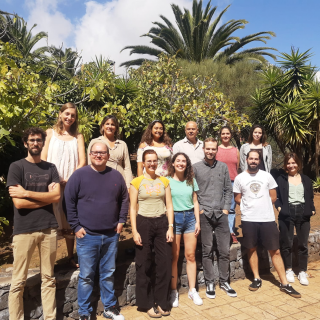Bibcode
Sarzi, M.; Iodice, E.; Coccato, L.; Corsini, E. M.; de Zeeuw, P. T.; Falcón-Barroso, J.; Gadotti, D. A.; Lyubenova, M.; McDermid, R. M.; van de Ven, G.; Fahrion, K.; Pizzella, A.; Zhu, L.
Bibliographical reference
Astronomy and Astrophysics, Volume 616, id.A121, 23 pp.
Advertised on:
8
2018
Journal
Citations
75
Refereed citations
72
Description
The Fornax cluster provides a uniquely compact laboratory in which to
study the detailed history of early-type galaxies and the role played by
the environment in driving their evolution and their transformation from
late-type galaxies. Using the superb capabilities of the Multi Unit
Spectroscopic Explorer on the Very Large Telescope, high-quality
integral-field spectroscopic data were obtained for the inner regions of
all the bright (mB ≤ 15) galaxies within the virial radius
of Fornax. The stellar haloes of early-type galaxies are also covered
out to about four effective radii. State-of-the-art stellar dynamical
and population modelling allows characterising the disc components of
fast-rotating early-type galaxies, constraining radial variations in the
stellar initial-mass functions and measuring the stellar age,
metallicity, and α-element abundance of stellar haloes in cluster
galaxies. This paper describes the sample selection, observations, and
overall goals of the survey, and provides initial results based on the
spectroscopic data, including the detailed characterisation of stellar
kinematics and populations to large radii; decomposition of galaxy
components directly via their orbital structure; the ability to identify
globular clusters and planetary nebulae, and derivation of high-quality
emission-line diagnostics in the presence of complex ionised gas.
Related projects

Traces of Galaxy Formation: Stellar populations, Dynamics and Morphology
We are a large, diverse, and very active research group aiming to provide a comprehensive picture for the formation of galaxies in the Universe. Rooted in detailed stellar population analysis, we are constantly exploring and developing new tools and ideas to understand how galaxies came to be what we now observe.
Ignacio
Martín Navarro